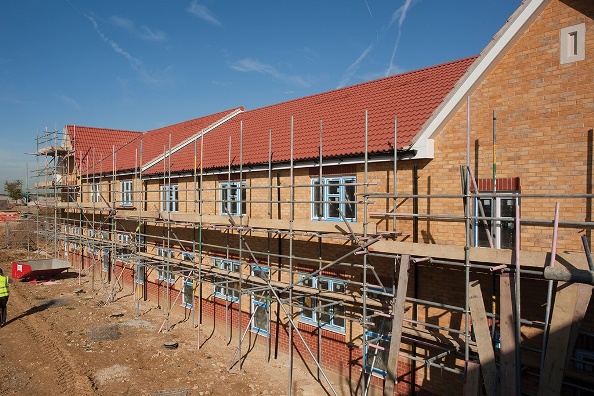- Yeezys - Jordans, Musee-jacquemart-andre News, Jordan Essentials Statement Hoodie - release dates & nike.
- Nike Air Max Tailwind 4 Supreme White Red Authentic New
- muzhskie krossovki nike jordan why not zero 2 seryj zheltyj - Jordan Reveal Photo Blue - these jordan 1 mid gs boast a flash of colour on the heel
- SlocogShops , Kanye West Calls The adidas Yeezy Boost 350 V2 "Steel Grey" a "Fake" Colorway , adidas mock neck pullover sweater free pattern
- AspennigeriaShops , 5 Best Adidas Classic Trainers in 2024 , jam tangan adidas sport original
- Air Jordan 3 Rust Pink CK9246 600
- Nike Blazer Mid 77 Catechu DC9265 101 Release Date
- new air jordan 1 high og osb dian blue chill white cd0463 401
- nike air force 1 low white gold dc2181 100 release date info
- Miles Morales Shameik Moore Air Jordan 1 Spider Verse
- Home
- News and analysis
- Info hubs
- Events
- Video
- Case Studies
- About us
- Magazine
- Advertising
Produced for the industry by the Association for Consultancy and Engineering
Features
Will Hammond’s housebuilding promises make a difference?

Chancellor Philip Hammond’s first autumn budget last year appeared to be a big one for housing, but did the market get what it wants? Jon Masters analyses the response.
Philip Hammond’s autumn budget made some big announcements for housing: £15.3bn of additional financial support over five years; planning reforms for freeing-up more land and making better use of what’s available; and the abolition of stamp duty on houses under £300,000.
Beneath the headline announcements came the detail, which housing sector organisations and commentators pored over to give their assessment of Hammond’s promises.
One pledge, carried over from the government’s housing white paper of February last year, announced a “review into build-out”. To be chaired by Sir Oliver Letwin, a panel will investigate an apparent gap between planning permissions and housing completions, reporting in interim in time for the 2018 spring statement and in full before the end of the year.
Those responding to news of this latest review included the London Assembly’s planning committee. A statement from assembly member and chair of the committee, Nicky Gavron, said: “The chancellor’s announcement today to appoint Oliver Letwin to chair a review is welcome, but the London Assembly has already done the research and has a package of measures to unblock supply.”
Pressed to explain, the research the assembly is talking about was done by residential market consultant Molior in 2014, to answer this brief: “the stock of unbuilt private-sector planning permissions is significant, so why aren’t we hitting housing delivery targets?”
The Molior report found a consistent gap between consents for sites and housing completions in London. In 2014 around 45% of permitted sites remained ‘on hold’. Some 766 permissions had not started on site - representing 172,116 homes. But not because of ‘land banking’ from developers trying to extract more land value. The assembly appears to have not taken proper heed of its own research. Molior concludes that pretty much all developers try to build as soon as they can.

According to the London Assembly, its ‘package of measures’ for unblocking supply is a series of potential solutions including a ‘use it or lose it’ approach to giving planning consent, plus more rigorous ways of assessing development viability and introduction of a Land Value Tax for removing incentives for land banking.
The findings of the Molior study, which interviewed developers behind 583 London planning permissions, reflect a very complex reality in the housing consents process. Homebuilders and planners alike have rejected the need for the new Letwin Review.
“Planning consent is already a use it or lose it regime. That is why all planning permissions have an implementation condition attached,” said Home Builders Federation (HBF) planning director Andrew Whitaker.
“As has been proved by numerous independent investigations, house builders do not land bank,” said Whitaker. “Moves to bring forward land held by parties not committed to develop them are welcome, but careful consideration needs to be given to the unintended consequences of seemingly straightforward proposals, such as taxing land that is currently unviable and thus making it more so.
"Moves to bring forward land held by parties not committed to develop it are welcome, but careful consideration needs to be given to the unintended consequences of seemingly straightforward proposals, such as taxing land that is currently unviable and thus making it more so."
Andrew Whitaker, planning director, Home Builders Federation
“A planning permission is consent, not an obligation to develop and there are many reasons why permissions are not implemented, which is why they are time limited. The default time limit has already been cut from five to three years. Forcing people to implement their consents will ultimately lead to fewer people seeking permissions and fewer sites coming forward, so leading to fewer houses being developed,” Whitaker explained.
On the planning side of developments, the president of the Royal Town Planning Institute (RTPI), Stephen Wilkinson, also said: “Another inquiry into the discrepancy between planning permission level and build-out rate is not what we need. The issue is complex and has been extensively reported on. There were a number of positive announcements in the budget, such as a focus on construction in urban centres, but we need to see the details. On the whole this was a missed opportunity to solve the housing crisis.”
The RTPI had called on government to do more to intervene in the land market: to help local authorities capture land value uplift to fund the vital infrastructure and affordable housing needed. In a letter to the chancellor before the budget, the RTPI also asked government to support small building companies - which have largely disappeared from the sector over the past decade - and to speed up efforts to make data on land more transparent.
These hopes were largely disappointed. Hammond did pledge a range of measures and additional funding to help authorities and SMEs, but looking into the detail, much of it is greater allowance on borrowing. The industry response was largely unimpressed.
According to the Home Builders Federation, cutting stamp duty combined with existing support from the Help to Buy scheme will help more young people onto the housing ladder and increase numbers of new homes built, but the HBF also said a lot more needs to be done a lot more quickly if the government is to hit its target of 300,000 houses built every year.
“Much more needs to be done, in particular with regard to the planning system, if the target is to be met,” said HBF executive chairman Stewart Baseley. Asked what needs to change exactly, the planning process simply has to be sped up, the HBF says: “It is taking too long to process applications from the point of outline consent to when builders can get on site and build,” Andrew Whitaker said.
“Increasing the rate at which consents are processed has a number of determinants and so requires tweaks in a number of areas. Plus, local authorities have to be given the capacity to process them efficiently. The delays and costs of processing applications are delaying builders of all sizes, but in particular they impact SME builders which do not have the capacity to deal with them,” said Whitaker.
Hammond repeated the government’s white paper promise of planning reform, but, says property consultant Rapley’s planning partner Jason Lowes, concrete proposals for reform were thin on the ground. “In fairness to the chancellor, he echoed Sajid Javid’s comments earlier in the year, that there was no magic bullet to solve the housing crisis. Even so, in terms of the planning system, there seems to be little in the way of new ammunition on offer,” Lowes says.
Others were more disparaging. Carl Dyer, head of planning at solicitors Irwin Mitchell, said: “The budget was the usual rattle of cans being kicked down the street and of failed policies being recycled. The 300,000 homes a year target is an aspiration for the mid-2020s. That figure needs to be seen in context - the 217,000 figure cited about houses built this year includes 40,000 conversions. The average for the last seven years has been 159,000 a year.”
The Letwin Review represents a cheap shot against developers, Dyer said: “Every time anyone has investigated land banking, they have found the delays were inherent in the system. When councils routinely impose 40 or 50 planning conditions, it takes time to get schemes off the ground.”

The autumn budget on housing: what the chancellor promised
- Raising the price at which a property becomes liable for stamp duty to £300,000. The duty will still apply for properties over £500,000.
- Consultation to come on minimum housing densities in city centres and around transport hubs.
- Review of build-out, to be chaired by Sir Oliver Letwin.
- Register of planning permissions – to improve information on where they’re held and progress to build-out.
- Consultation on changes to Community Infrastructure Levy developer contributions to capture land value uplift.
- Homes and Communities Agency to be renamed Homes England and strengthened to use investment and planning powers in the land market.
- New £1.1bn Land Assembly Fund for Homes England to use to develop strategic sites.
- A further £2.7bn from the National Productivity Infrastructure Fund for the competitively allocated Housing Infrastructure Fund, taking its total to £5bn.
- A housing deal for Oxfordshire - offering £150m of infrastructure support over five years in return for 100,000 homes by 2031.
- £630m through the NPIF for site infrastructure and remediation to aid building on small, stalled sites.
- £1.5bn of Home Building Fund loans targeting SMEs struggling to find finance.
- Potential for £8bn of loan guarantees to support housebuilding SMEs and purpose-built rented housing.
- Raising of borrowing cap for qualifying councils in affordability pressure areas from 2019-20.
- £400m of loan funding for estates regeneration in ‘run-down neighbourhoods’.





